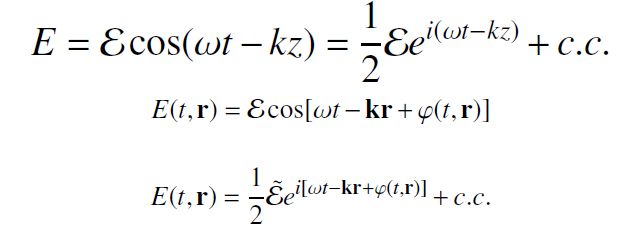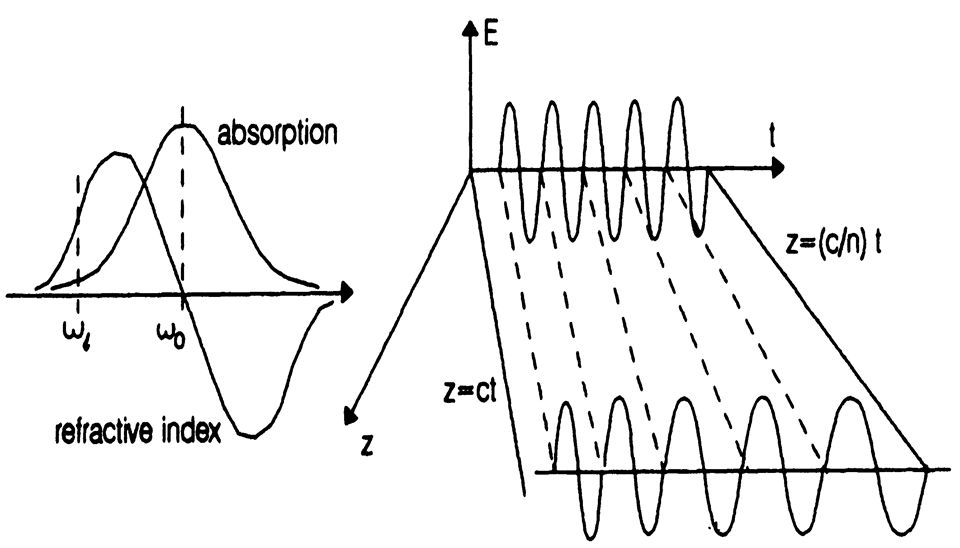Physics 464 (ECE 464 ), Laser Physics I
Mondays and Wednesdays, 11:00 to 12:15 pm, PAIS Room 1160
Fall 2025
Instructor
Jean-Claude Diels
Physics & Astronomy room PAIS 2236, phone 277 4026
CHTM, room 114A, phone 272 7830 email: jcdiels@unm.edu
Teaching Assistant
Yankang Liu
Reference material
Lecture content, followed by a link to the powerpoint file, and homework assignments will be posted on my personal Web site dielslab.unm.edu/courses.
References will be made to textbooks and articles, when appropriate. I follow the notations of the book “Ultrafast Phenomena” of which a link can be found before the first lecture.
Other reference material:
- LASERS, by Anthony E. Siegman, University Press
- Laser electronics, J.Y Verdeyen, Prentice Hall
- Solid state laser engineering, W. Koechner, Springer verlag
- Photonics, Saleh
Assignments
Homework problems will be assigned on a regular base, due generally on Wednesdays. They will count for 40% of the final grade.
Some problems will be treated in class.
Exams One midterm and one final; 30% of grade each.
Book "Ultrafast Phenomena"
INTRODUCTION
Putting Laser Light in Context
1. Light is just one example of wave
There are:
- Water waves
- Plasma waves
- Acoustic wave
- Light waves
- Gravitational waves
A wave propagate for huge distances, while each particle responsible for the wave motion stays at the same average position, just inducing the motion of the next particle.
In most cases, the wave starts from a local oscillation, and propagates radially from there, like rings produced by a duck paddling on a pond.
In the case of light, it is the electric field produced by a charge oscillating up and down that starts off the wave.
- Wave propagation equation (first order) Retarded frame
- Sine waves and “rogue waves”
- water waves, acoustic waves, gravitational waves and light waves Wave propagation equation
- Wave propagation equation: second order to first order - slowly varying envelope approximation
-
Homework 1 assigned, due Monday August 25, 10 AM.
[Verdeyen Chapter 1]
[Ultrashort Laser Pulse Phenomena Section 1.2]
1 Link to powerpoint file (Lecture 1.ppt)
2. Notations

3. Complex representation of light field
3,1 - Instantaneous polarization. Phase of polarization - Frequency shifts

In time, even the light frequency is not conserved
3.2 Superposition of waves - coherence

2 Link to powerpoint file (Lecture 2.ppt)
DOPPLER SHIFTS (all waves)
Longitunal Doppler shift
Transverse Doppler shift
Review of Lorenz transformation in your favorite ENM textbook
WHAT CHARACTERIZES LASER LIGHT?
Dynamic range for
- Wavelength
- Time scales
- Energies and power
- Intensities
- Radiation pressure
- Linear and Angular momentum
3 Link to powerpoint file (Lecture 3.ppt)
There is more than one way to skin a cat...
Angular momentum The laser Gyro
From Fourier Transforms to Wigner to Schroedinger
Review of Fourier Transforms
5 link to Fourier properties.pdf and Fourier review 8-26.ppt
Construction of single pulses and pulse trains --- Frequency combs --- Appliucation of derivatives: FT of Maxwell's equations
CONVOLUTIONS: Square wave --- Measurement of continuous signals for a finite time --- Deconvolution --- What is the “ultrashort pulse” limit?
6 link to Fourier review_II-9-3-25
Wigner Function, time bandwidth product
[Ultrashort Laser Pulse Phenomena Chapter 1 Section 1.5]
Quantum Mechanics in a few slides; uncertainty relations
[Ultrashort Laser Pulse Phenomena Chapter 5 Section 1]
Quantum mechanics, COhem Tannoudji Vol 1.
7 Link to powerpoint file (From Wgner to QW.ppt)
POLARIZATION AS ELECTRON RESPONSE
Light-matter interaction: the light field moves the electron. The field of the moving electrons adds to the applied light field.
Free electron versus bound electron. Plasma frequency and Drude model.
[Ultrashort Laser Pulse Phenomena Section 3.1, 3.2]
8 Link to powerpoint file (9-10-multiphoton_vs_tunnel_bound_vs_free_electron.ppt)
A good lecture on harmonic oscillator cav be found in:
web.ics.purdue.edu/~nowack/geos557/lecture3a-dir/lecture3a.htm
Electron oscillator applied to the description of polarization:
Pedrotti page 535-539 (chapter 25).
Born and Wolf: pages 95-99 (7th edition)
It is shown in the class that the same equations applies to plasma.
9 Link to powerpoint file (9-15-free_electron)
LIGHT-MATTER INTERACTION
From semi-classical to classical
References:
- Ultrafast Phenomena: Section 3.3.4
- Verdeyen Chapter 14
Interaction of light with two-level systems Coherent propagation effects; Adiabatic following,self-induced transparency, zero-area pulse propagation, photon echoes.
From Bloch's equations to rate equations approximation to linear polarization (Ultrafast Phenomena Section 3.4).
10 Link to powerpoint file (2-level systems.ppt)
11 Wrap-up 2 levels (Sept-22-wrap-up 2 levels)
- Parameters of rate equations how they are connected.
- Maxwell’s equations versus Einstein coefficients (Einstein coefficient are treated in Verdeyen Chapter 7)
- Defying reciprocity in optics
- Power broadening, homogeneous broadening inhomogeneous broadening (Broadenings are treated in Verdeyen Chapter 8)
- Creating an inversion with rate equations
- Saturation, self saturation, mutual saturation
- Design amplifiers
12 link to powerpoint file (line broadening_rate_equations_9-22.ppt)
13 link to powerpoint file (blackbody-Einstein-Sep29.ppt)
14 link to pdf file {broadening.pdf)
GAUSSIAN BEAMS
Best reference: the original paper of Kogelnik and Li 1966.
Verdeyen: Gaussian beams Ch3 -- ABCD matrices Ch2
15 Link to powerpoint file (Introduction to Gaussian beams.ppt)
16 Link to powerpoint file (Gaussian_beams2 - October 6.ppt)
17 Link to powerpoint file (Gaussian3_ABCD matrices.ppt)
Ultrafast Phenomena, Sections 1.6 and 1.7 18 Link to powerpoint file (Gaussian4-spacetime.ppt)
19 Link to powerpoint file (Gaussian4-Stability versus equilibrium.ppt)
20 Link to powerpoint file (Gaussian6-recap-HeNe-Oct-13.PPT)
21 Link to powerpoint file (October 15-HeNe-mode-locking.ppt
Intermezzo: Laser gyro as a quantum two level system
22 Link to powerpoint file (October 20_Laser as a quantum system.ppt)
Other Lasers: solid state, homogeneous broadening, mode-locking
23 Link to powerpoint file (Other lasers.ppt)
Review for mid-term
24 Link to powerpoint file (Review -October_27.ppt)
25 Link to powerpoint file (Review October 29.ppt)
26 Link to powerpoint file (Review 3 - Nov. 3.ppt)
RESONATORS
Some detailed derivations, Fabry-Perot and microreso0nators, FIELD transmission and reflection transfer functions, Fabry-Perot with gain, Gires Tournois
Reviewing key points of the Fabry-Perot
Fabry-Perot.ppt
Lab tour.ppt
PROJECT
Link to powerpoint file (Project outline.PPT)
(last update Nov 20, 2025)
HOMEWORKS
HOMEWORK 1: Maxwell propagation equations
Due August 25, 10 AM Solution
HOMEWORK 1I Doppler shifts Solution
Due September 3 Ducklings
HOMEWORK 1I I Fourier transforms exercises
Due September 19 Solution
HOMEWORK 1V Dielectric constant
Due October 1st
HOMEWORK V Ti:sapphire laser cavity (ppt file)
HOMEWORK VI Time cavity (ppt file) DUE WEDNESDAY 11/13 BEFORE CLASS CHECK NEW PPT WITH SLIDE 4 DELETED
MIDTERM: Q&A
